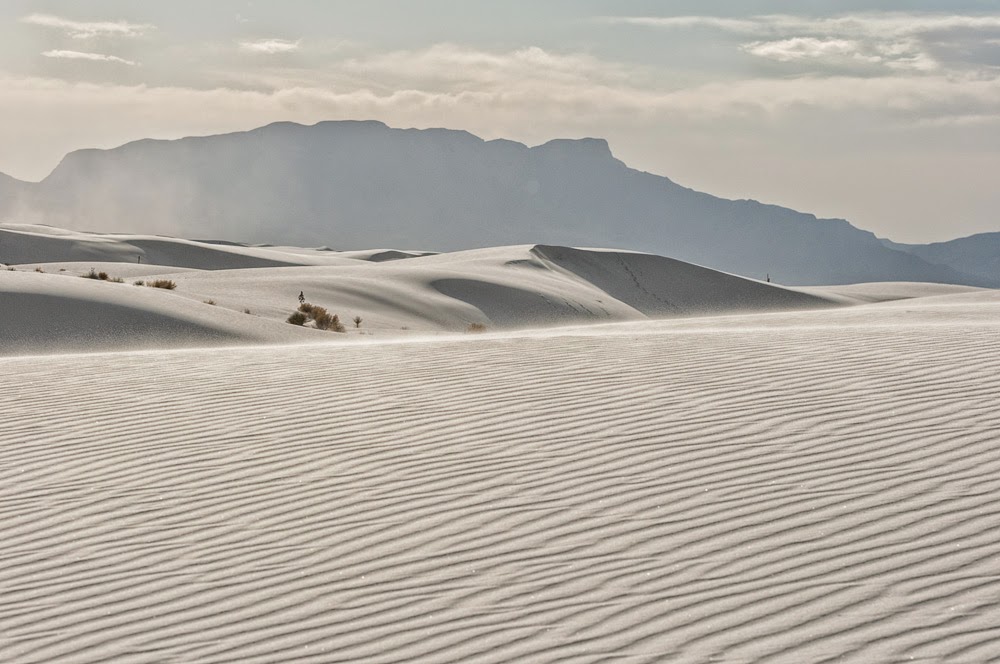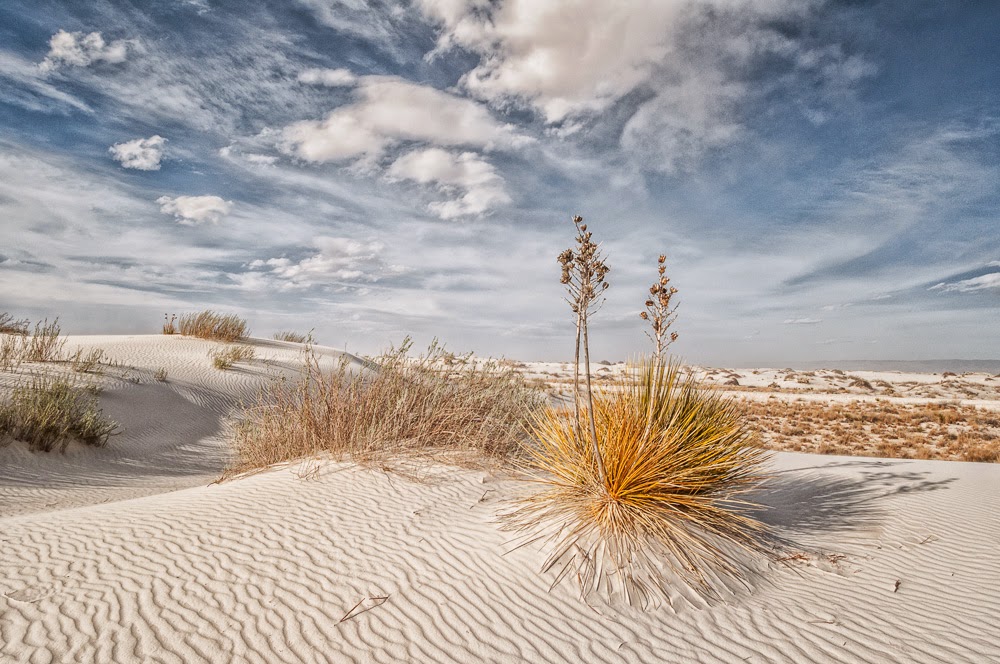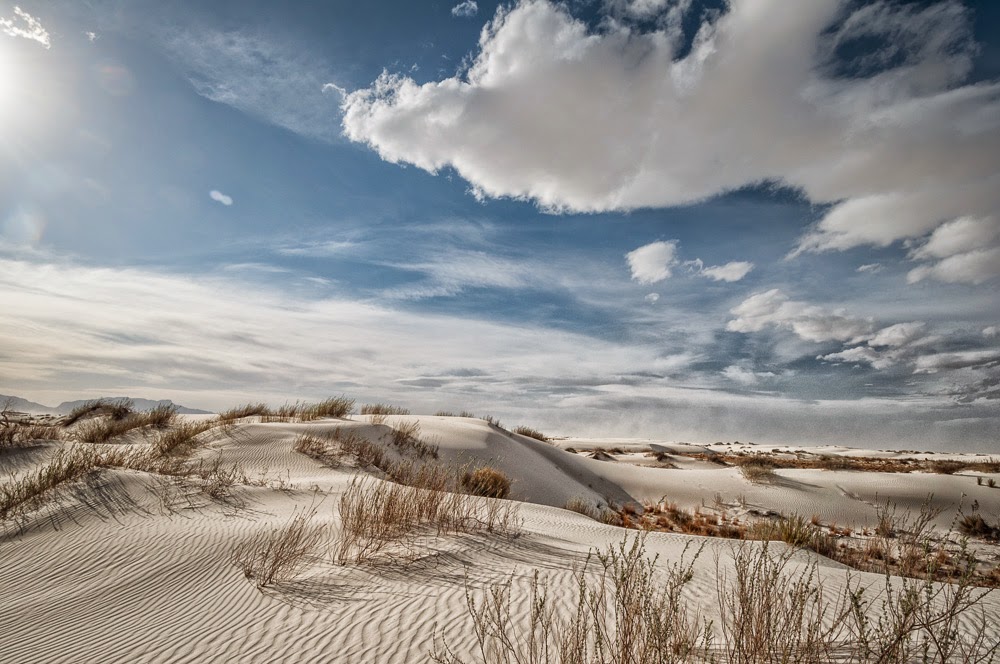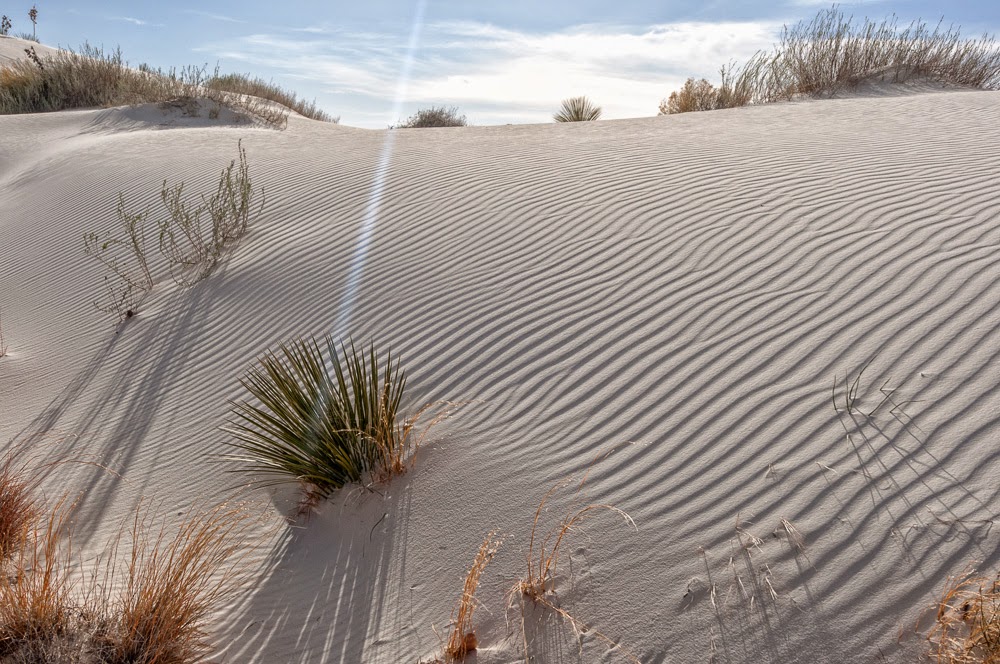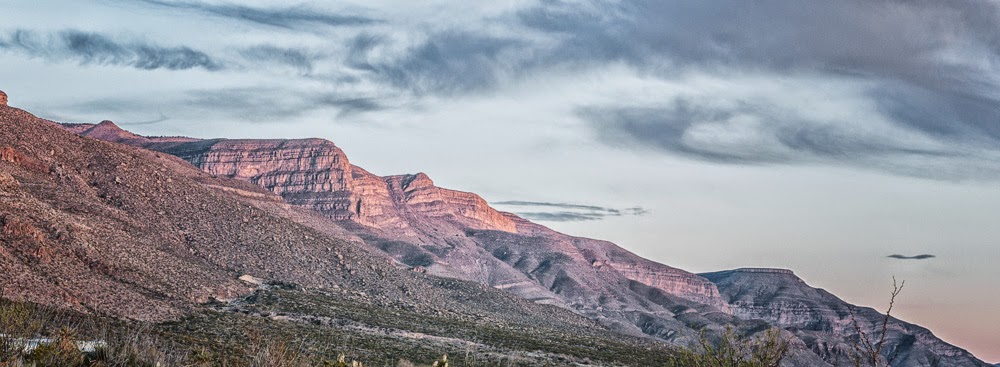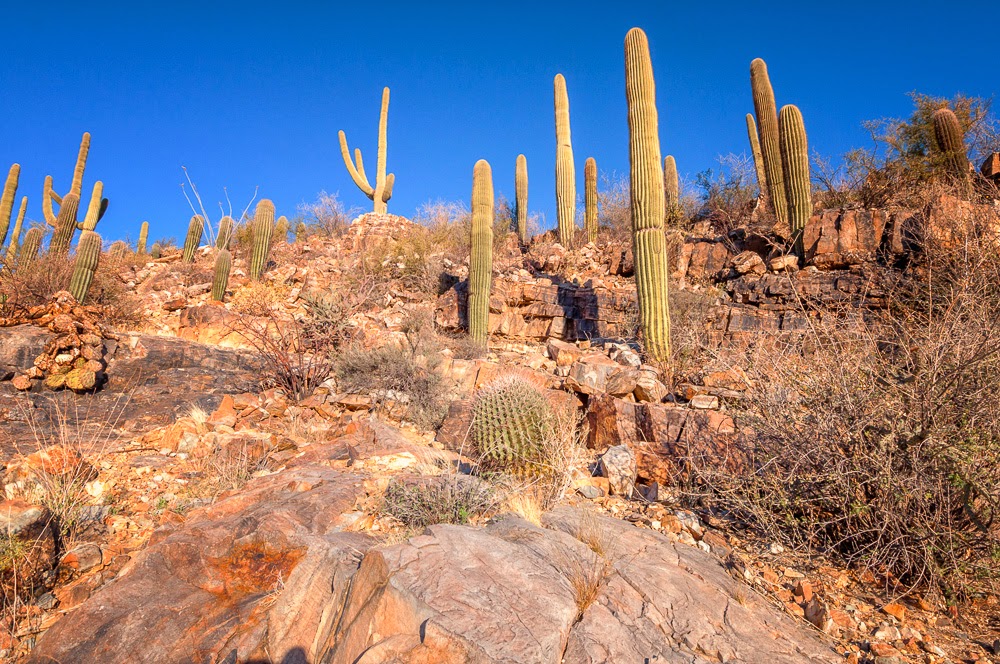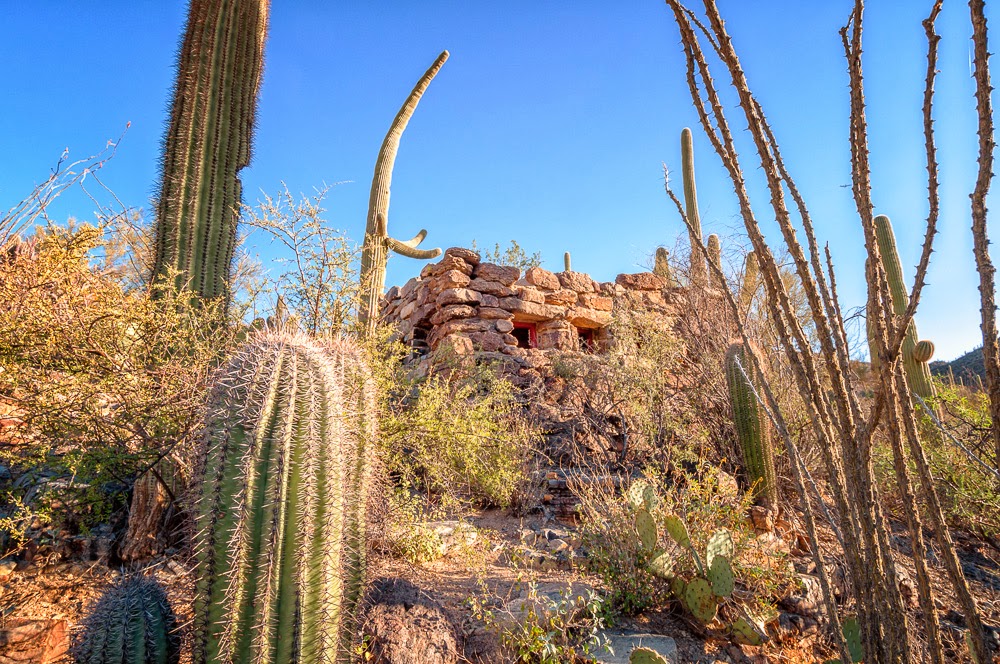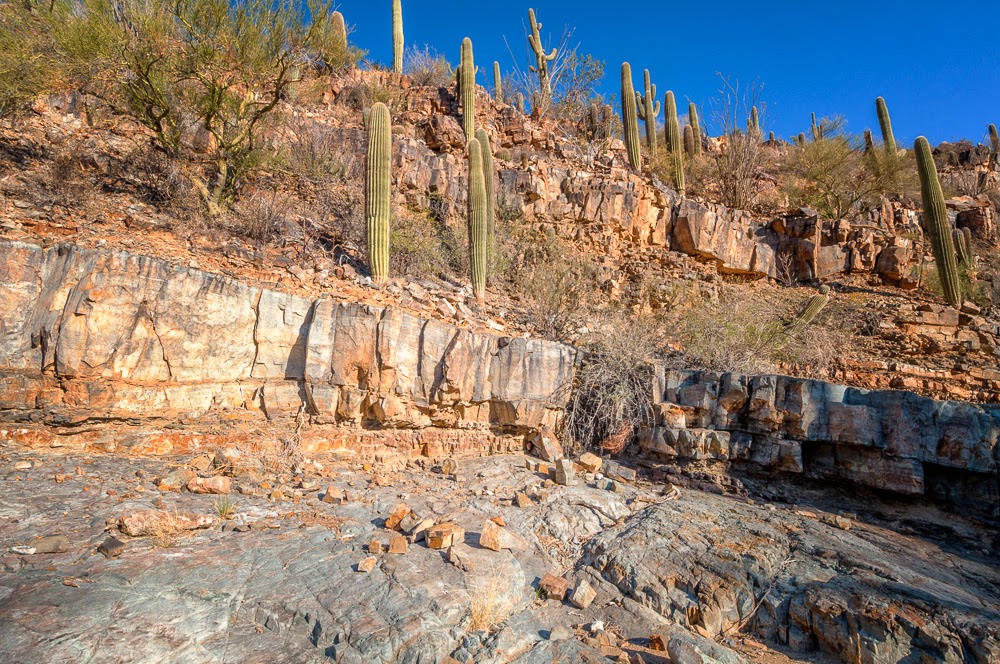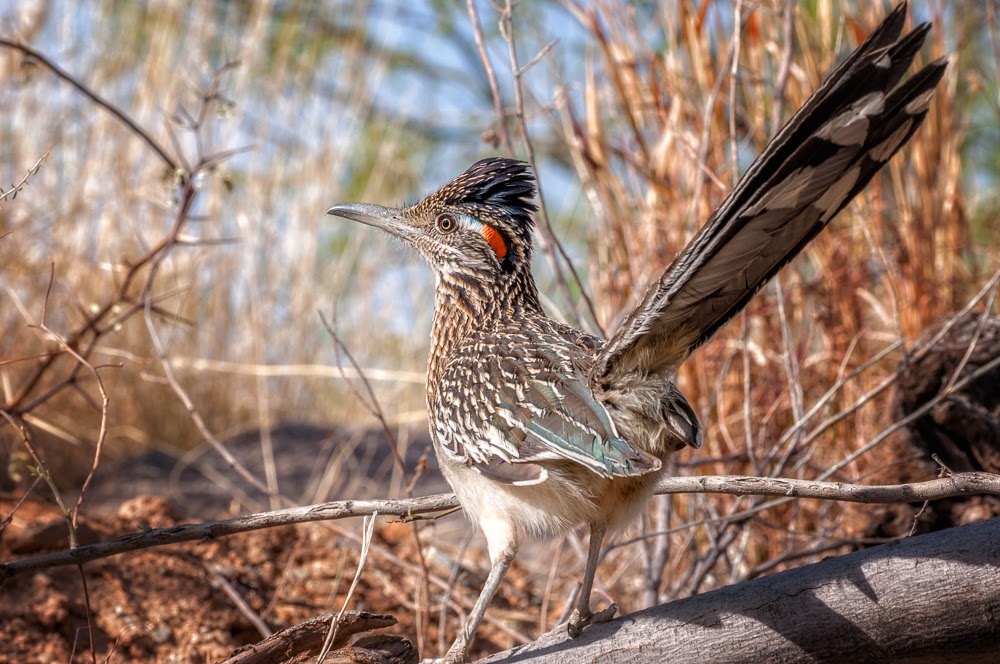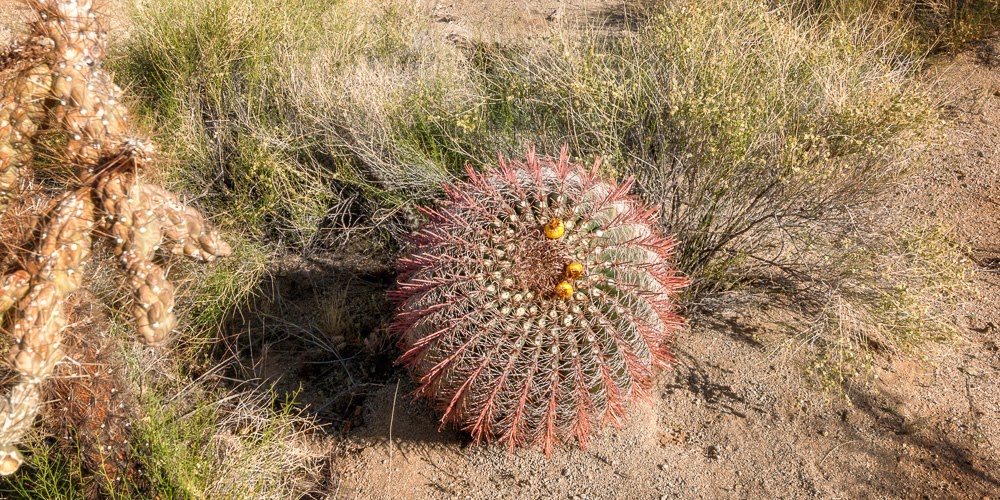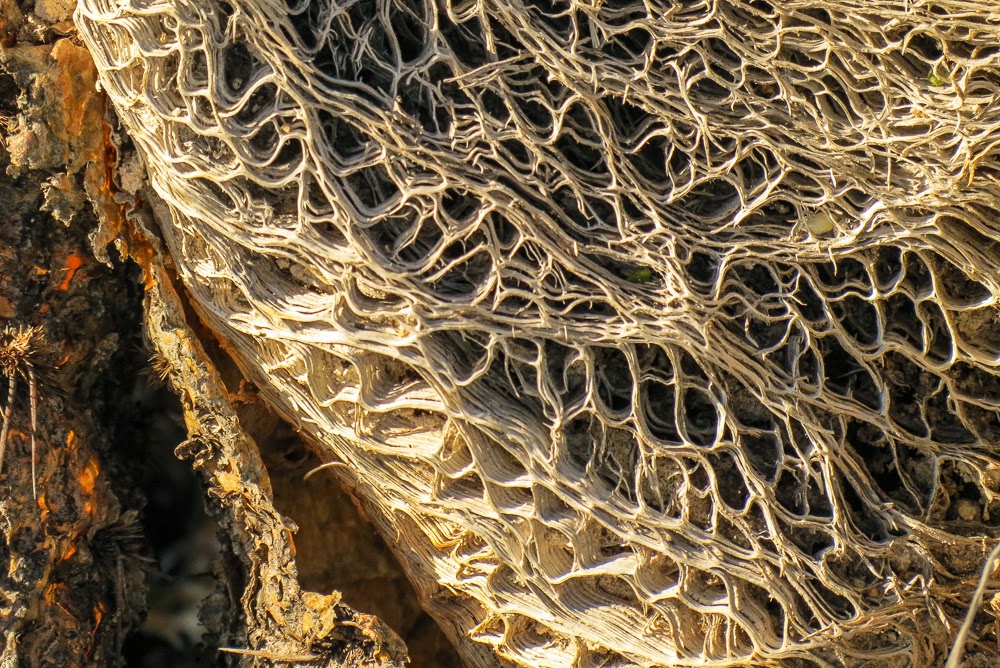camped at Oliver Lee State Park
Jason and Nancy
This version of yucca was in huge bloom across this part of the desert, this time the Chihuahuan Desert.


What does this
look like to you? For all the world it
looks like snow. It is gypsum—sheetrock.
On the bottoms the stuff is thick like flour. The dunes themselves are fine sand, about the
consistency of sugar. The visitors
center sells and rebuys saucer sleds. Children were sledding everywhere. A 6 or 7 yo girl and her dad kicking a soccer
ball around the hard packed picnic area.
The echoing laughter and Spanish sound musical. As everywhere, we didn’t have to walk far to
be again mostly alone.
“The dunes are
easy photography because there is so much white space around everything. It’s a natural for composition,” Jason
contributes. “Maybe I should start
photographing snow.” He finds White
Sands the most notable environment of the trip to date.
For me it was
difficult to photograph. How can a photograph share the feeling of standing on
a dune in the midst of 275 square miles of sand dunes white as snow? The incongruity of warm “snow” . . . Jason
trying to trying to do donuts in a big parking lot surfaced by sheet rock
mud. Scientists have found the same
hydrous calcium sulfate deposits from Mars Rover substance analysis, proof of
water. And indeed it feels like walking
on a Voyager away mission in the
Delta Flyer. Last factoid: the water table is 2 or 3 feet down. Desert has a paucity of soil and water, but
here there is water.
A walking report: We average 12-14 miles a week. We walk harder trails. This was the first I
turned back on. On Dog Canyon Trail my
judgment was that while I could get up, coming down would be too risky. My legs feel strong, still in all my ability
to ascend exceeds my ability to descend. The trail was steep, we crossed maybe
20 feet of a smooth surfaced slanted rock.
I lost footing in loose sharp stones more here than all other trails
combined. The trail itself was steep and
it cut into a steep, rocky, cactus-filled mountain side. Looking down I felt not exactly dizzy, but
the need to divert my eyes directly back to the trail. On the land, stay fixed on where you want to
go. On the water, face the danger and
back away. Life lessons.
NPR series on
border stories: One this morning was on the Tohono O’odham Nation (near Ajo and
Organ Pipe). My new acquaintances, Fred
and Della, are Tohono O’odham. They used to be called the Papagos. It was a Spanish given name meaning “bean
eaters.” In the 70s the tribe reclaimed
its own name. Fred told me it felt proud to be again “people of the desert”.
Then he chuckled, “But I was kind of used to bean eater.” Travel makes
news personal. Tribal law enforcement in one year found 125 dead bodies on
their reservation—a problem obviously, but also because it takes tribal
resources to investigate the deaths.
Maybe you heard these NPR stories too and they are like the stories we heard again and again, especially around Aho. Then a story about
a woman crossing in a group, being detected by Boarder Patrol, outrunning them
and then finding herself crossing alone without even water harsh mountains and desert canyons, arroyos and wide hot valleys. She was
saved, finding a discarded cigarette lighter. She built a brush fire to
insure attention from Boarder Patrol helicopters. She has decided to stay south.
A father being
deported for the third time. “What will
you do now?” He responds, rest my feet a
little, implying that he will again cross north at his earliest opportunity to
be with his 3 yo and 8 yo children in Los Angeles. “What do you think about being on this
deportation bus?” A voice full of
softened sadness, I want to be with my family.
Right on top of
that, in a different universe the area is filled with a small nation of comfortable white people
traveling for warmth and pleasure. Many for learning too, for understanding more. Being
in that group requires humility and presence.
At our last border patrol check point, “Is anyone in the trailer? Are
you both US citizens?” First no, then yes then back to the incredible journey
in landscape. Someday I would like to
live in one place long enough to penetrate beyond the superficial, to better
appreciate the complexities.
Again the military
influence so pervasive in the deserts. Leaving this camp we crossed the
White Sands Missile Range. Missiles are being fired over the roads the morning
we left, closing even the major highways. We enjoyed a lazy morning in camp. And the highways reopened 1ish. The Fort Bills
McGregor Range and Holloman Air Force Base are also lie near our camp. After this these photos we moved back to the Las Cruses area. We have been many days at Leasburg NM State Park campground.











